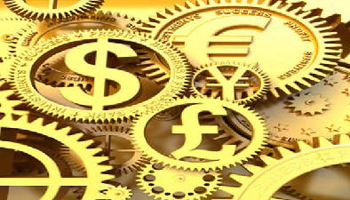What is Forex Trading all about? is one of the most frequently asked questions we get addressed, so we will be providing information on what is the forex market, who trades, where and when it is traded, and why. Additionally, we’re going to introduce you to a few terms related to the field, for basic familiarity for those who are new to the field of trading and interested in it for the financial freedom, or maybe planning on practising to get one of the FX Trader jobs at an institution.
The Foreign Exchange Market – aka Forex or FX – is a global market for currency trading, which determines the relative values of different currencies. The Foreign Exchange Market combines all the worldwide financial institutions and organizations of all sizes into a single marketplace and it is the largest and most liquid market in the world with a normal day by day exchanging volume surpassing $5 trillion.
Unlike the stocks and commodities market (check Stock market vs commodity market: the 3 major differences between them for further reference), Forex is a decentralized market: this means that there is no central location and there are no formal exchanges where transactions take place. Forex trading happens mainly electronically by telephone, internet or in person. Being a global market, the FX market is accessible 24 hours a day. The markets are available 5 days a week, providing a normal worker’s routine for those who decide to trade for a living!
Being a worldwide global market, price changes aren’t governed by strict regulations enforced by governments. You cannot regulate a currency market, except to ensure fair trading practices with honest brokers.
With Forex Trading, investors profit by correctly forecasting future values of currencies. If for example, you think the U.S. dollar will be increasing its value against the Canadian dollar, you can buy the USDCAD currency pair. If you are right in your prevision and the actual value of the U.S. dollar against the Canadian increases, you can sell that pair for a higher price. Your profit will be the difference between the purchase price and the sale price, multiplied by the number of lots traded – trade size.
With over 100 currency pairs in the markets, Forex traders usually can trade what they see fit. Regardless, there tend to be some popular currencies which are traded by the majority in the FX market, mainly due to liquidity. Those would be the US Dollar, British Pound, Euro, Japanese Yen, Australian Dollar, Swiss Franc, and Canadian Dollar.
 Both individuals and investors alike trade forex markets. Individuals who trade the forex market tend to constitute a low percentage of volume during daily trades. This is because effective currency trading tends to require a mass of capital to profit. Institutions alternatively will trade a market with millions, and possibly billions in capital, depending on the set strategies of such investors. Individual traders can range from an average trader who bases their income off trading, to a rich investor with years in currency trading as a veteran. Institutions who join the FX market are also a variety. Those include banks and central banks, which comprise the majority of volume in FX trading. Those may also include trading companies such as corporations, or investment and hedge fund managers.
Both individuals and investors alike trade forex markets. Individuals who trade the forex market tend to constitute a low percentage of volume during daily trades. This is because effective currency trading tends to require a mass of capital to profit. Institutions alternatively will trade a market with millions, and possibly billions in capital, depending on the set strategies of such investors. Individual traders can range from an average trader who bases their income off trading, to a rich investor with years in currency trading as a veteran. Institutions who join the FX market are also a variety. Those include banks and central banks, which comprise the majority of volume in FX trading. Those may also include trading companies such as corporations, or investment and hedge fund managers.
In addition to trader activity, the economic and political conditions of a Country shape the global forex market. The state of a country’s affairs, in terms of security and productivity, has a huge impact on the traded markets and central banks have a vital role in the valuing of a currency in the markets, participating in owning and trading forex markets, in addition to shaping them through their policies to stabilize influence to any currency.
Bid’ and ‘Ask’ in Forex Trading:
All FX prices, or quotes, include a ‘Bid’ and ‘Ask’ similar to other financial products:
- Bid is the price at which you can sell currency
- Ask is the price at which you can buy currency
Spread in Forex Trading:
The difference in the BID/ASK of the currency pairs is referred to as the ‘spread‘. An example would be EUR/USD dealing at 1.13500/1.13508 (in this case the spread is 0.8 pips or 0.00008). The exceptions to this are the JPY pairs which are quoted to just 2 decimal places. A USD/JPY price of 76.41/76.44 displays a 3 pip ‘spread’.
Point or ‘pip’ in Forex Trading:
Pip stands for Percentage in Points. Most currency pairs are quoted to 5 decimal places with the change from the 4th decimal place (0.0001) in price commonly referred to as a ‘pip’. For example, if the price of the EUR/USD forex pair moved from 1.13500 to 1.13620, it is said to have climbed by 12 ‘pips’ (62-50=12).
Read more: How to trade currency online: basics to learn about the Forex Market >>
Check all the newest FX Trader jobs >>
